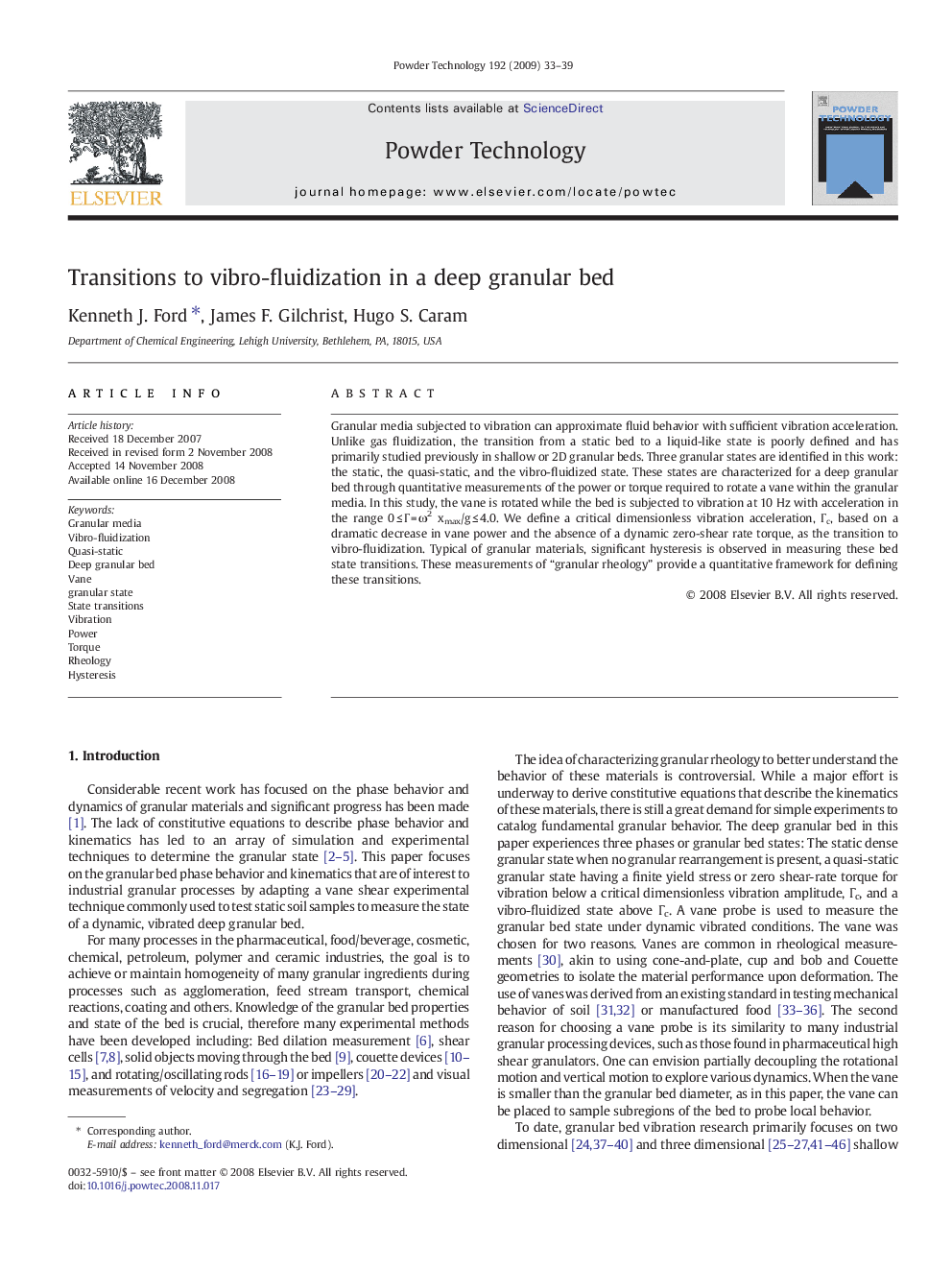| Article ID | Journal | Published Year | Pages | File Type |
|---|---|---|---|---|
| 238595 | Powder Technology | 2009 | 7 Pages |
Granular media subjected to vibration can approximate fluid behavior with sufficient vibration acceleration. Unlike gas fluidization, the transition from a static bed to a liquid-like state is poorly defined and has primarily studied previously in shallow or 2D granular beds. Three granular states are identified in this work: the static, the quasi-static, and the vibro-fluidized state. These states are characterized for a deep granular bed through quantitative measurements of the power or torque required to rotate a vane within the granular media. In this study, the vane is rotated while the bed is subjected to vibration at 10 Hz with acceleration in the range 0 ≤ Γ = ω2 xmax/g ≤ 4.0. We define a critical dimensionless vibration acceleration, Γc, based on a dramatic decrease in vane power and the absence of a dynamic zero-shear rate torque, as the transition to vibro-fluidization. Typical of granular materials, significant hysteresis is observed in measuring these bed state transitions. These measurements of “granular rheology” provide a quantitative framework for defining these transitions.
Graphical abstractVibro-fluidization of a deep granular bed at a critical dimentionless vibration acceleration, Гc, is confirmed by dramatic decreases in vane power at high vane speed and by the absence of a dynamic zero-shear rate torque. Three granular states are identified: static, quasi-static and vibro-fluidized.Figure optionsDownload full-size imageDownload as PowerPoint slide
